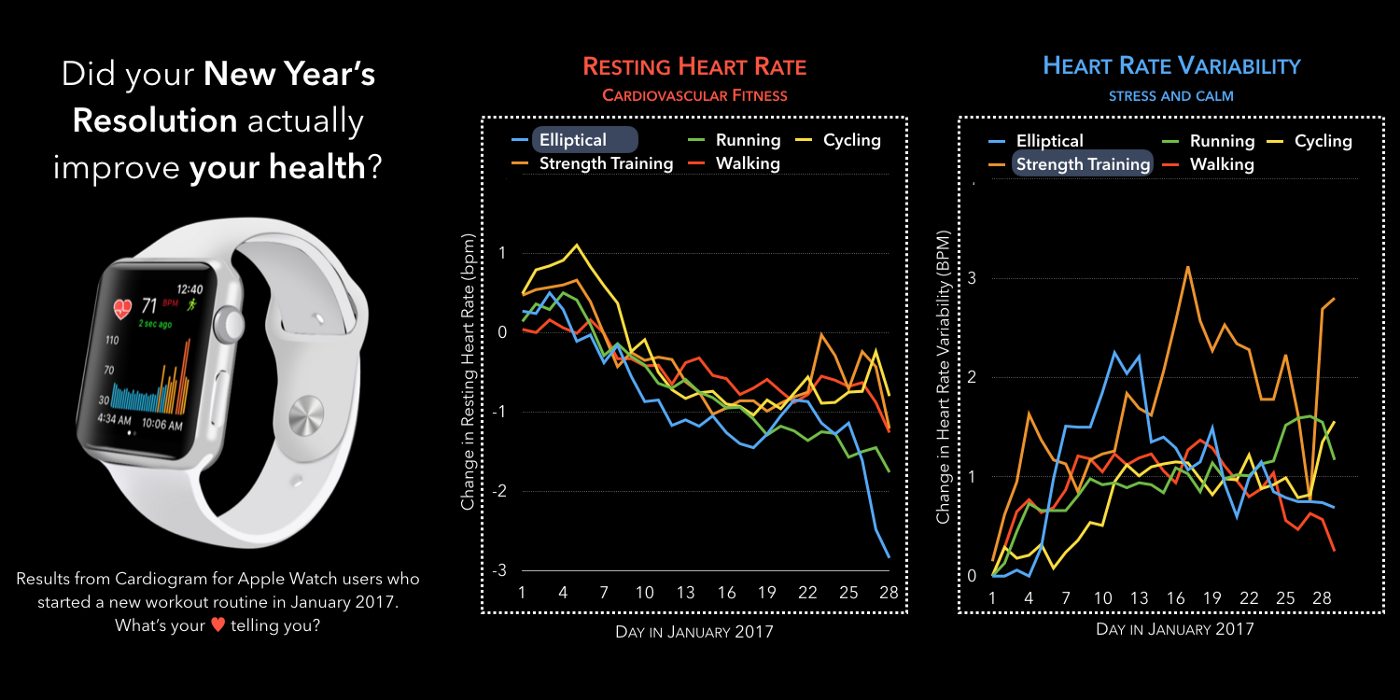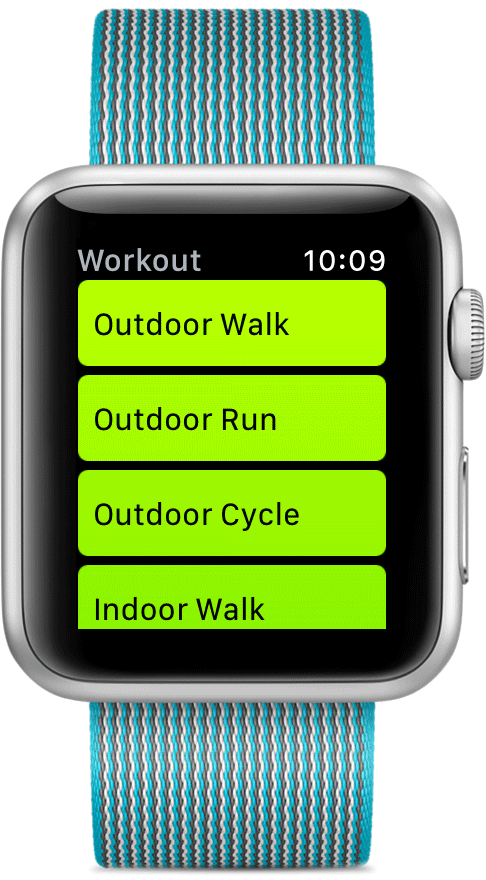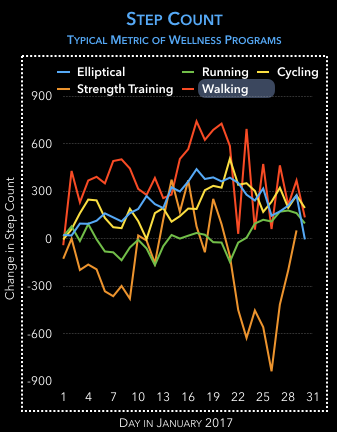Much of our knowledge about exercise comes from small-scale studies done in controlled research conditions. But with tens of millions of us wearing heart rate sensors, like Apple Watch, we can now measure key biomarkers like resting heart rate or heart rate variability continuously. And, more importantly, we can start to figure out which workout routines really drive results.
New Years Resolutions are a natural experiment—many of us are going out for a run, a bike ride, or lifting weights for the first time. In order to find out which workout routine work best, we analyzed the results of 34,369 New Years Resolutions using Cardiogram for Apple Watch. As reported by BusinessInsider and Yahoo Finance, the majority of Apple Watch users have been keeping their fitness New Year’s Resolutions.
For a follow-up analysis, we focused on two key metrics of cardiovascular health: resting heart rate and a proxy to heart rate variability.

52% of people started a new workout routine in January
We started with a cohort of 66,317 people with complete heart rate and workouts data for December and January 2017 (this excludes, for example, people who received an Apple Watch for Christmas or who don’t use the Workouts app). Of those, 34,369 (52%) switched their workout routine in January, and the most popular workout types were walking, cycling, running, functional strength training, and elliptical. We measured workouts using Cardiogram for Apple Watch and workouts which from the Health app, which may come from third party apps or the Apple Watch’s built-in Workouts app (Figure 2, left). In the analyses below, we focused on those who made a dramatic change: 3 or fewer workouts of a given type in December, and 10 or more in January.

Rest Heart Rate is driven by Running and Elliptical
Resting heart rate—your heart rate while awake but not moving—is one of the strongest measures of cardiovascular health. Every 10 bpm decrease reduces your overall risk of dying by 9%, a low resting heart rate has been shown to halve your risk of sudden cardiac death, and it even lowers your risk of cancer.
The most effective workouts to reduce resting heart rate running and elliptical. By day 28, runners had a median decrease of 1.76 bpm, and those using an elliptical saw a decrease of 2.84 bpm (Figure 1, above).
Heart Rate Variability is drive by Strength Training and Running
In contrast, our proxy of heart rate variability is driven by strength training. HRV can be used to measure stress and calm, athletic conditioning, and even correlates with medical conditions like diabetes.
Heart rate variability is traditionally measured by R-R intervals: the difference, in milliseconds, between successive heart beats. Most consumer wearables, including Apple Watch, don’t expose raw data on R-R intervals, but you can develop proxies. In this case, we tried a variant of the root mean square of successive RR difference heuristic from this publication in Heart Rhythm, except instead of using successive RR differences, we used successive BPM differences. This heuristic showed strong results in our study on atrial fibrillation with UCSF Cardiology—95+% accuracy in a clinical setting—although be warned that it’s not a perfect correlate to traditional HRV metrics.
In our case, strength training increased our surrogate to HRV by 2–3bpm, the highest increase. The second best-performing workout was running, at 1.55 bpm after 28 days (Figure 1, ab0ve).
What about step count?
Many traditional wellness programs focus on getting you to 10,000 steps a day. Unfortunately, if you measure the best-performing workouts by step count, they don’t look especially strong—in fact, people who start a strength training program actually reduce their number of steps on average. And walking, which has a relatively small effect on heart rate metrics, ranks highest by step count (of course). You get what you measure, so it’s important to measure the right thing.

What's next?
Wearables are starting to mature—Aetna has announced it’s subsidizing the Apple Watch, medical studies are starting to come out using data from ResearchKit and Wearables, and the sensors themselves are growing more diverse, including metrics like blood pressure.
At Cardiogram, we think building an engaging app is the key to performing cutting-edge, large-scale medical research. You’ll be hearing a lot from us in the coming year, as our work with UCSF Cardiology starts to bear fruit. For now, if you’d like to contribute to the study or just understand your own heart rate data, check out Cardiogram: App Store Link: Cardiogram for Apple Watch.


